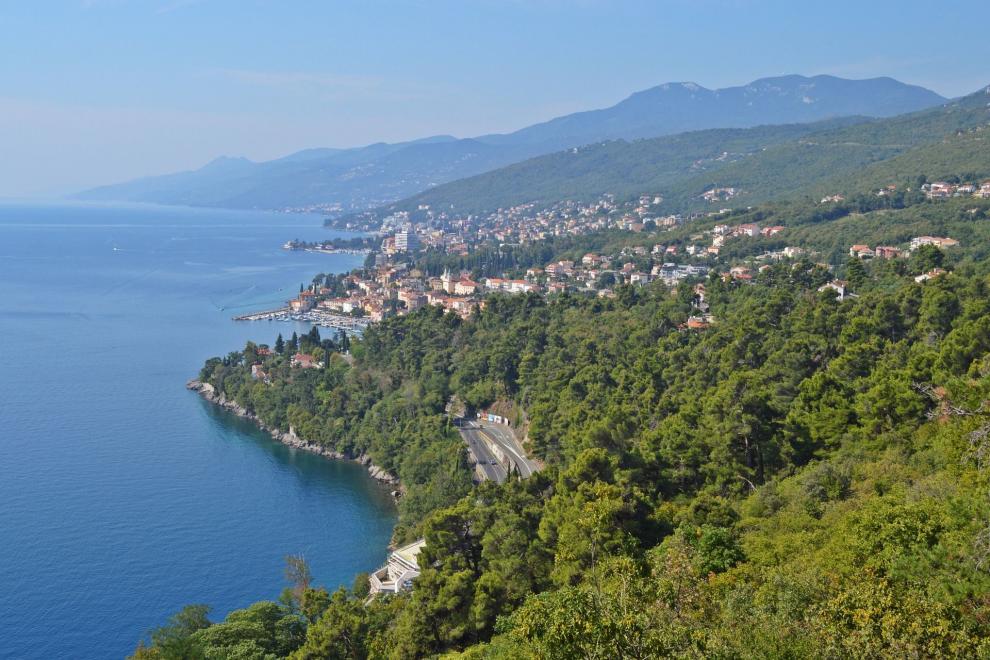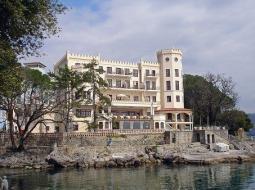Thessaloniki gets ready for its metro launch in November
The underground rapid transit lines have been under construction for almost two decades due to various project delays
 TheMayor.EU logo
TheMayor.EU logo 
During the Middle Ages the current territory of the town was divided between Veprinac (nowadays a locality of Opatija) and Kastav (the fishermen's village of Veprinac). The small hamlet of Opatija itself developed around a Benedictine abbey dedicated to St. Jacob. Since 1420 the western Istria was gradually conquered by the Republic of Venice and the remaining territory up to Opatija fell to the House of Habsburg and later was incorporated into the Austrian Littoral.
The modern history of the town began in 1844, when Iginio Scarpa, a wealthy merchant from Rijeka, built Villa Angiolina manor, where notable guests often come. The Austrian Southern Railway company opened the branch line from Pivka to Rijeka via nearby Matulji in 1873 and supporting the development of tourism in Opatija and neighbouring Lovran. Some years later, the railway company purchased the Villa Angiolina. At the time, Friedrich Julius Schüler, the Managing Director of the Southern Railways, started the construction of the Hotel Quarnero (Kvarner Hotel) and the Hotel Kronprinzessin Stephanie (today Hotel Imperial), and was responsible also for the unique lungomare and parks.
In 1887 was established the "Union Yacht Club Quarnero" in Opatija - the first sailing club on the Adriatic coast. Two years later the Cisleithanian government officially declared Abbazia (Opatija) the first climatic seaside resort on the Austrian Riviera.
During World War I, in 1920 Opatija was assigned to Italy. In 1922, Italy started a program of forced italianization of the population, and most of the public positions were assigned to Italian-speaking citizens.
In 1947 Opatija was given to Yugoslavia. Most of the Italian-speaking population, whose percentage had significantly increased, emigrated to Italy. The first casino in Eastern Europe was opened in Opatija - the "Casino Rosalia". In 1981 the Hotel "Admiral" and marina were inaugurated. In 1991 with the breakup of Yugoslavia, the town became part of Croatia.
Opatija is a town in Primorije-Gorski Kotar Country in western Croatia. It is located 18 km southwest of the regional capital Rijeka. The city is geographically located on the Istrian peninsula, though not in Istria Country. The tourist resort is situated on the Kvarner Gulf, part of the Adriatic coast, in a sheltered position at the foot of Ucka massif, with the Vojak peak reaching 1,401 m. The town had 11,659 inhabitants (2011), of which 6,657 lived in the urban settlement.
Opatija is one of the most famous tourist destinations in Croatia and the town with the longest tourism tradition (celebrating 170 years of organized tourism). It captivates visitors with its unique architecture, especially the huge number of palaces and magnificent parks.

Opatija is popular summer and winter resort, with average high temperatures of 10 °C in winter, and 32 °C in summer. It is surrounded by beautiful woods. The whole sea-coast to the north and south of the town is rocky and picturesque, and includes several smaller winter resorts.
The old 14th-century Benedictine abbey, Opatija Sv. Jakova, from which the town derives its name (opatija means “abbey”) is situated in Saint James's Park. Saint Jacob's church stands on the same spot. A must visit is also the neo-Romanesque Church of the Annunciation. Another sight is the Villa Angiolina, now transformed into a museum.
Opatija is known for the Maiden with the Seagull, a statue by Zvonko Car, which is positioned on a promontory by the Juraj Sporer art pavilion. It is one of the symbols of the town. A gilded replica of the statue Madonna that once stood here but was demolished by communists after the end of World War II, now stands in front of Saint Jacob's Church.
Address: 51410 Opatija, Maršala Tita 3